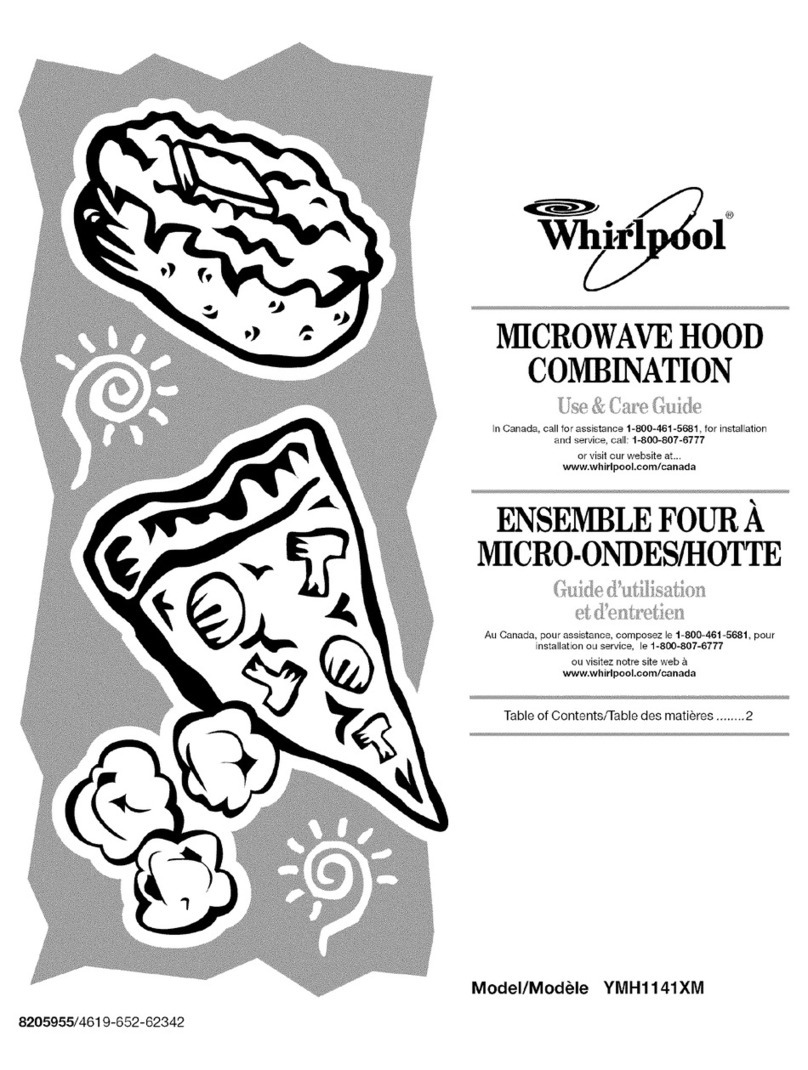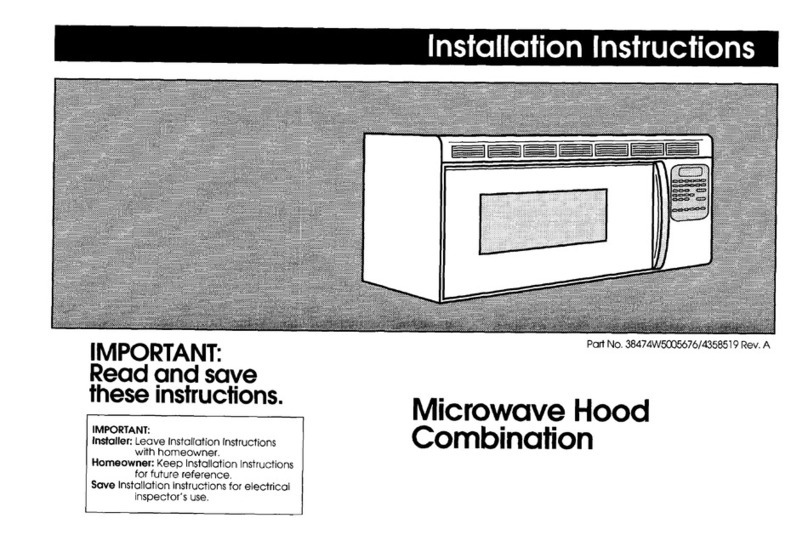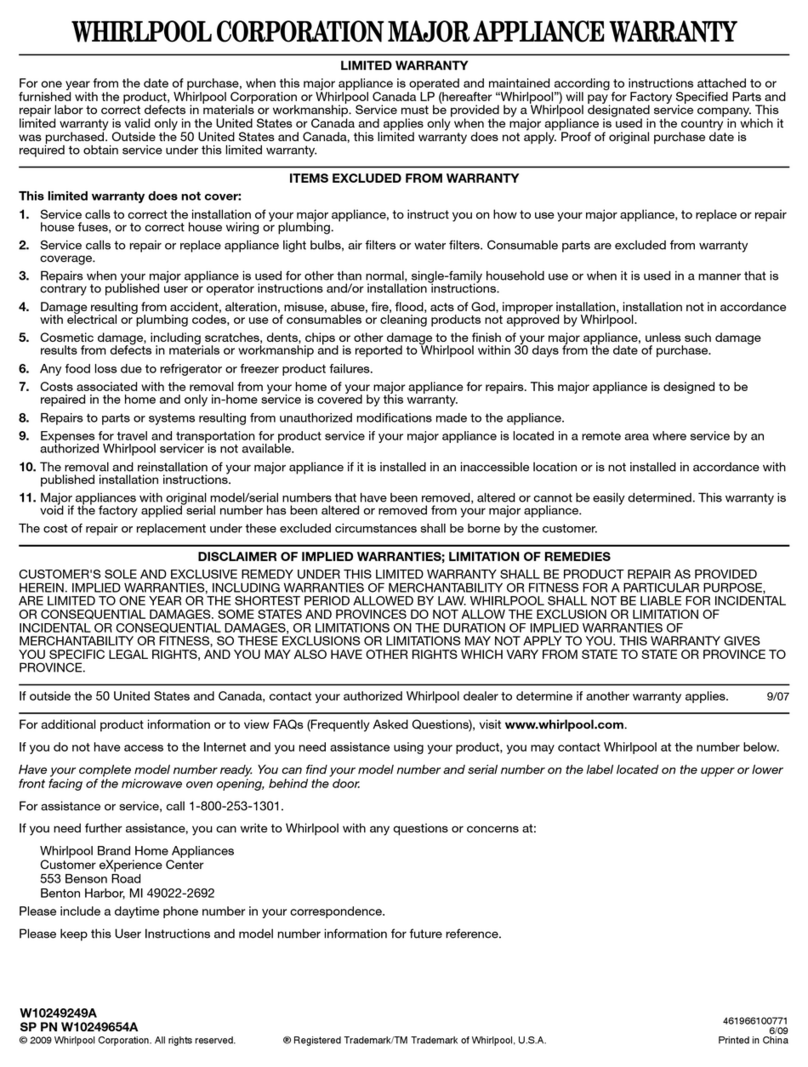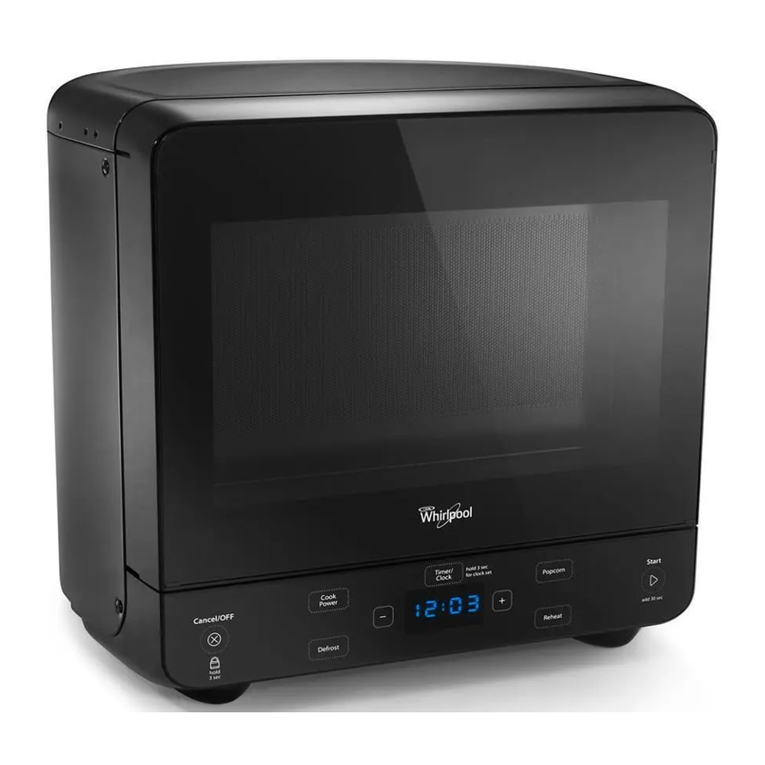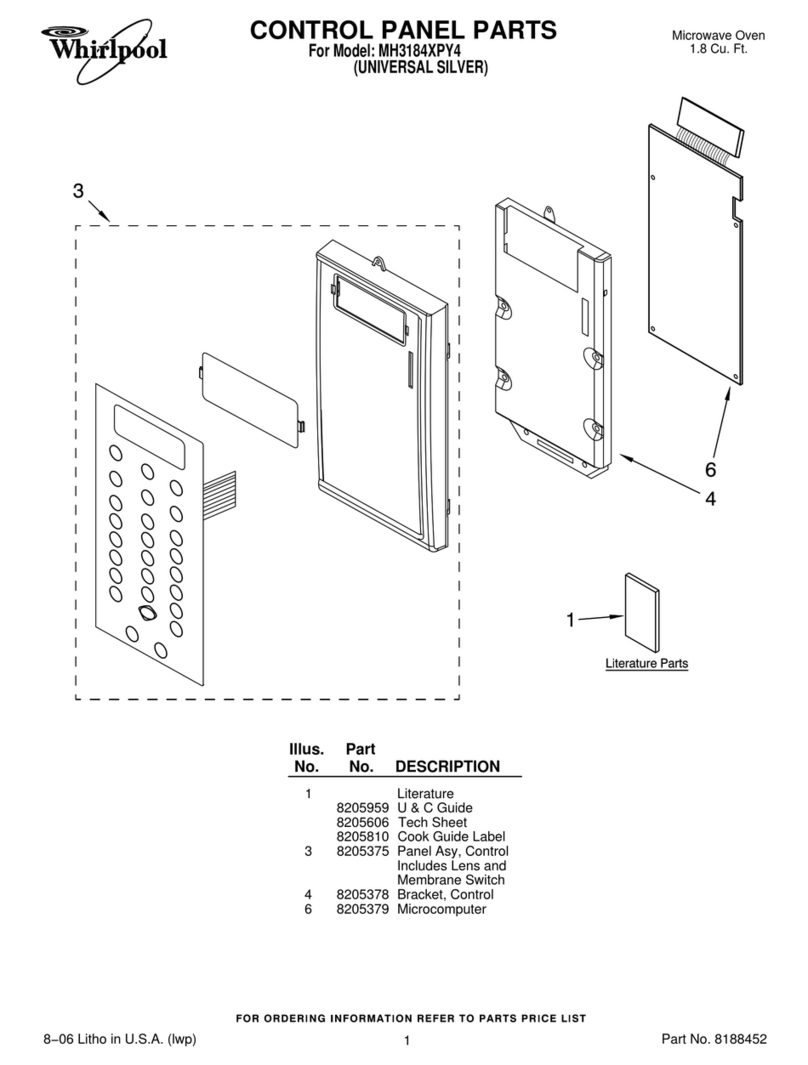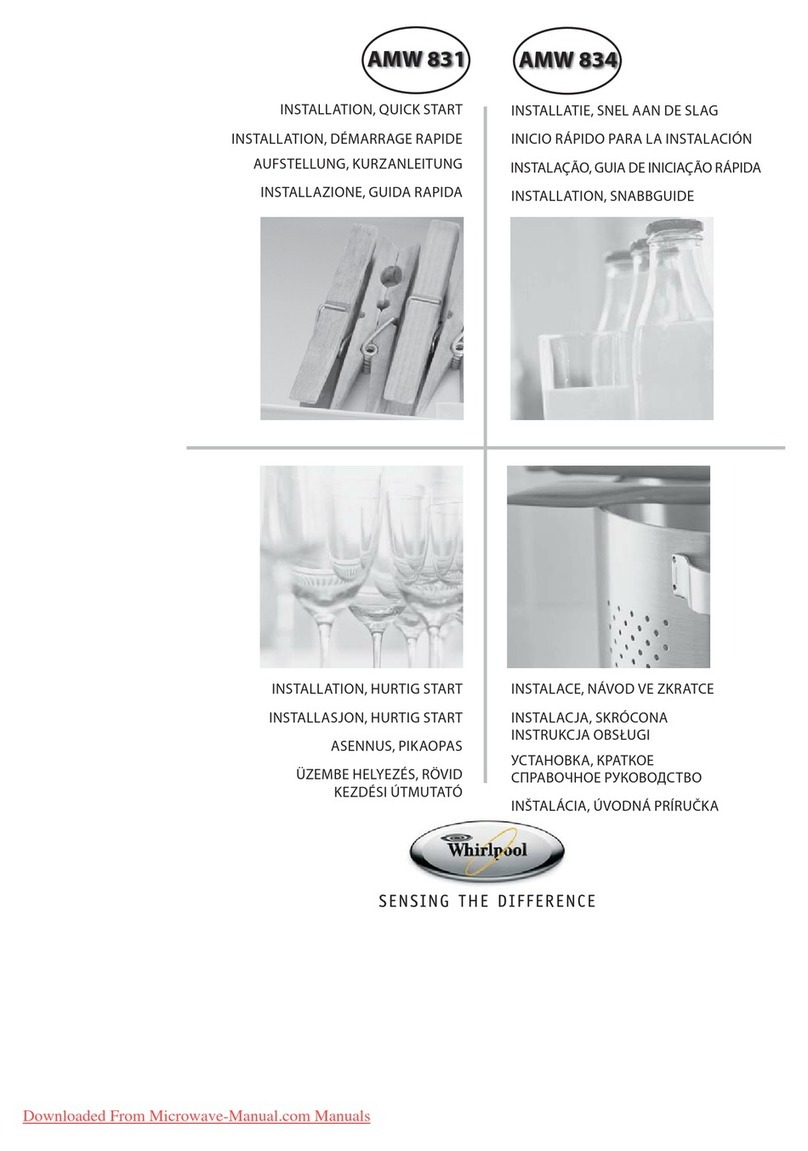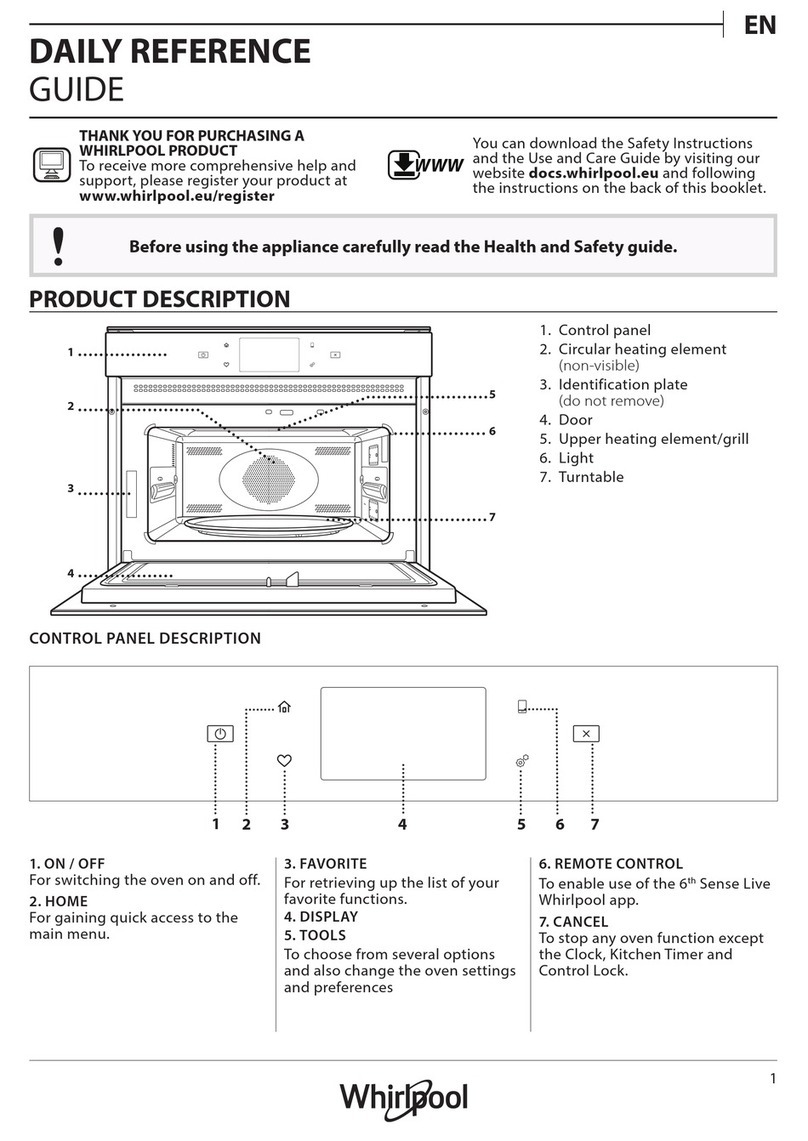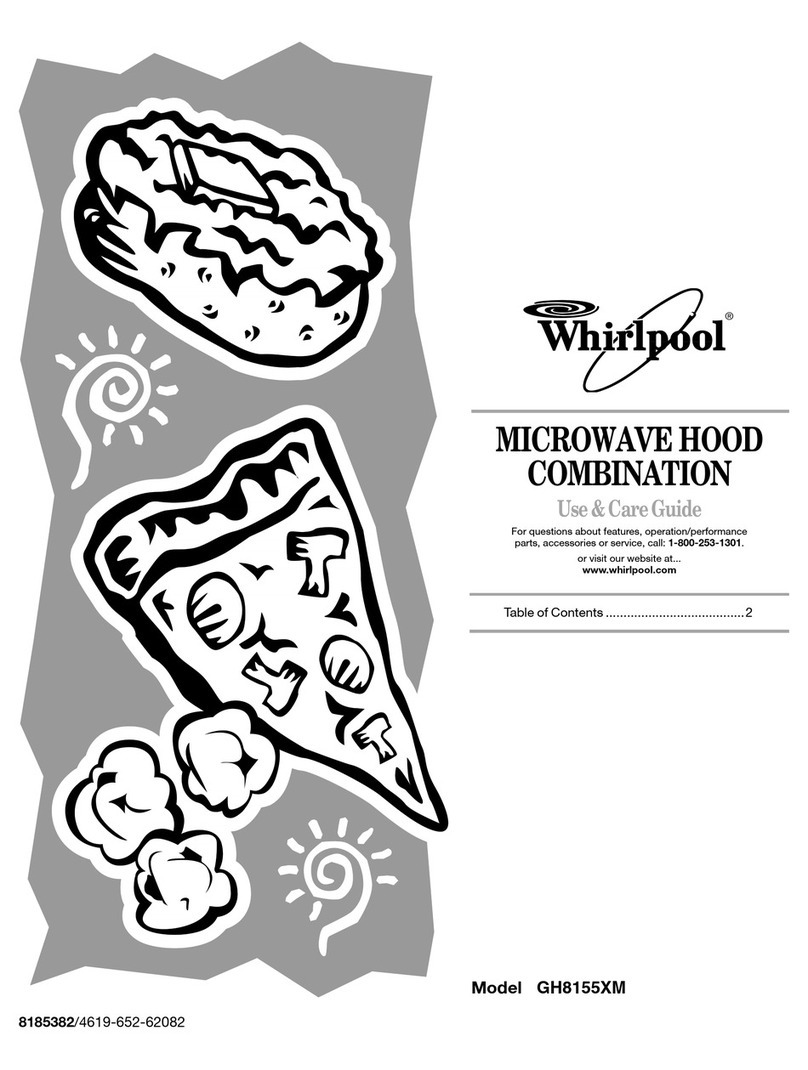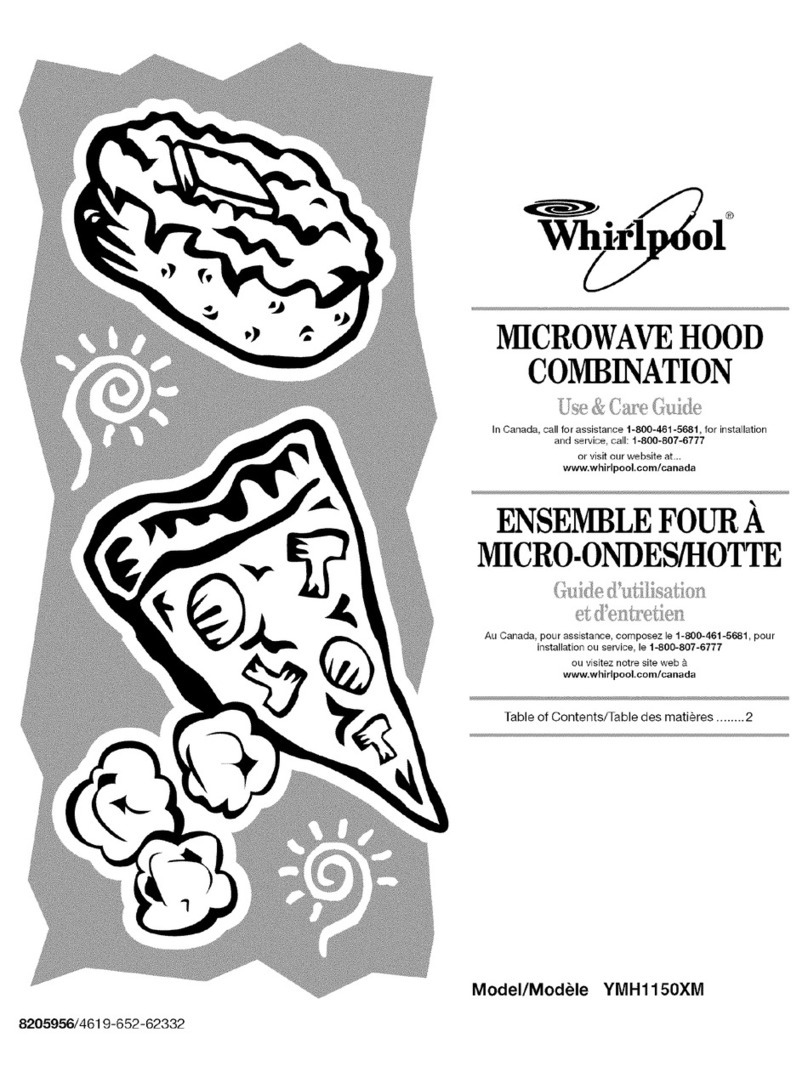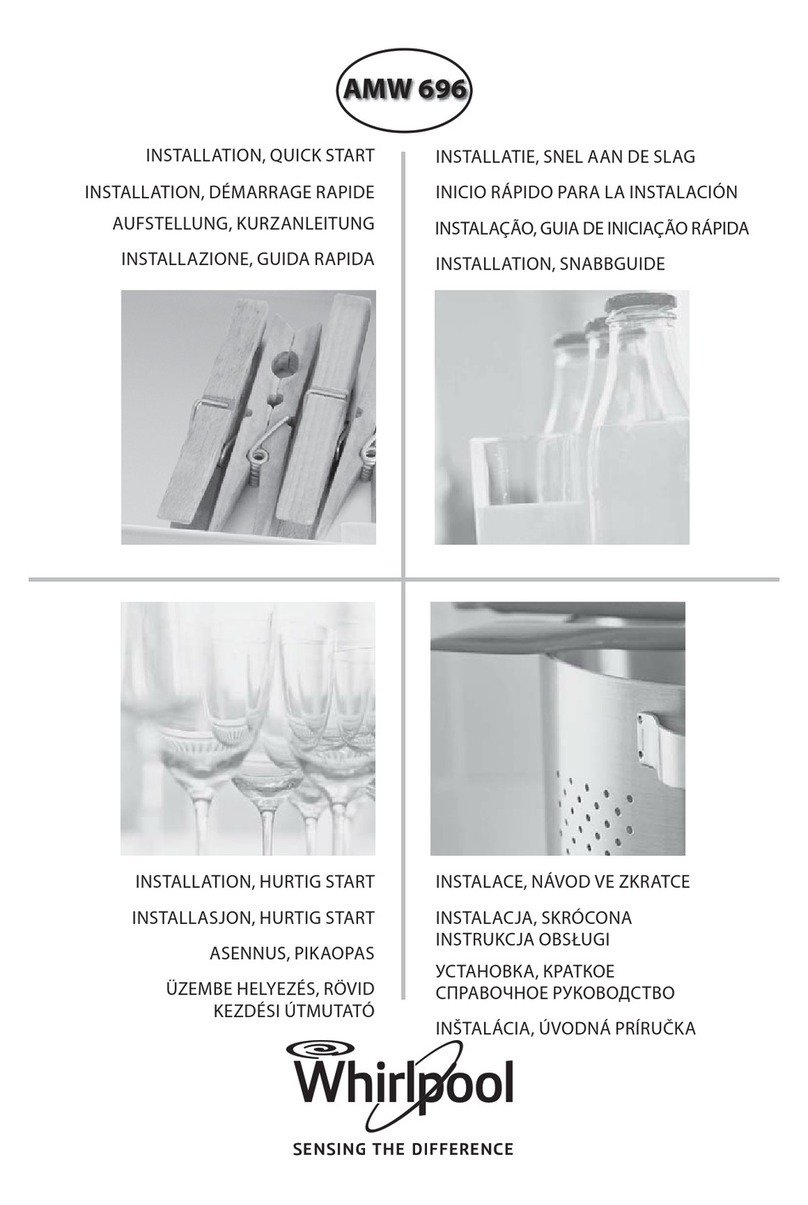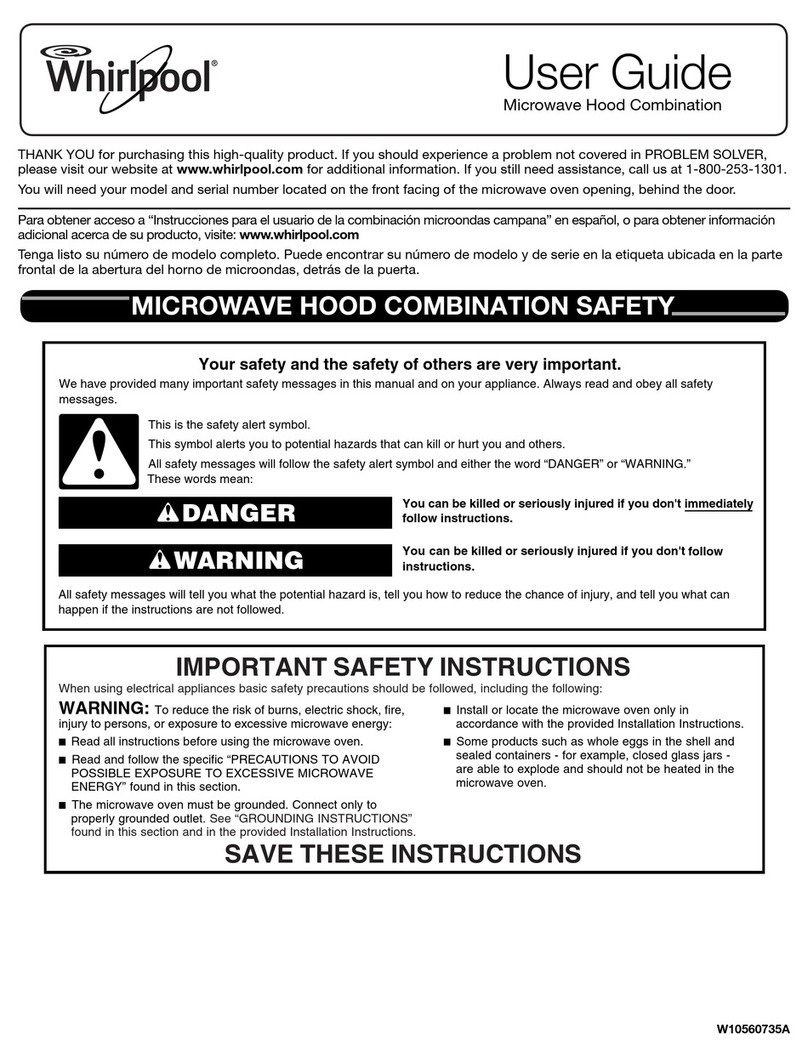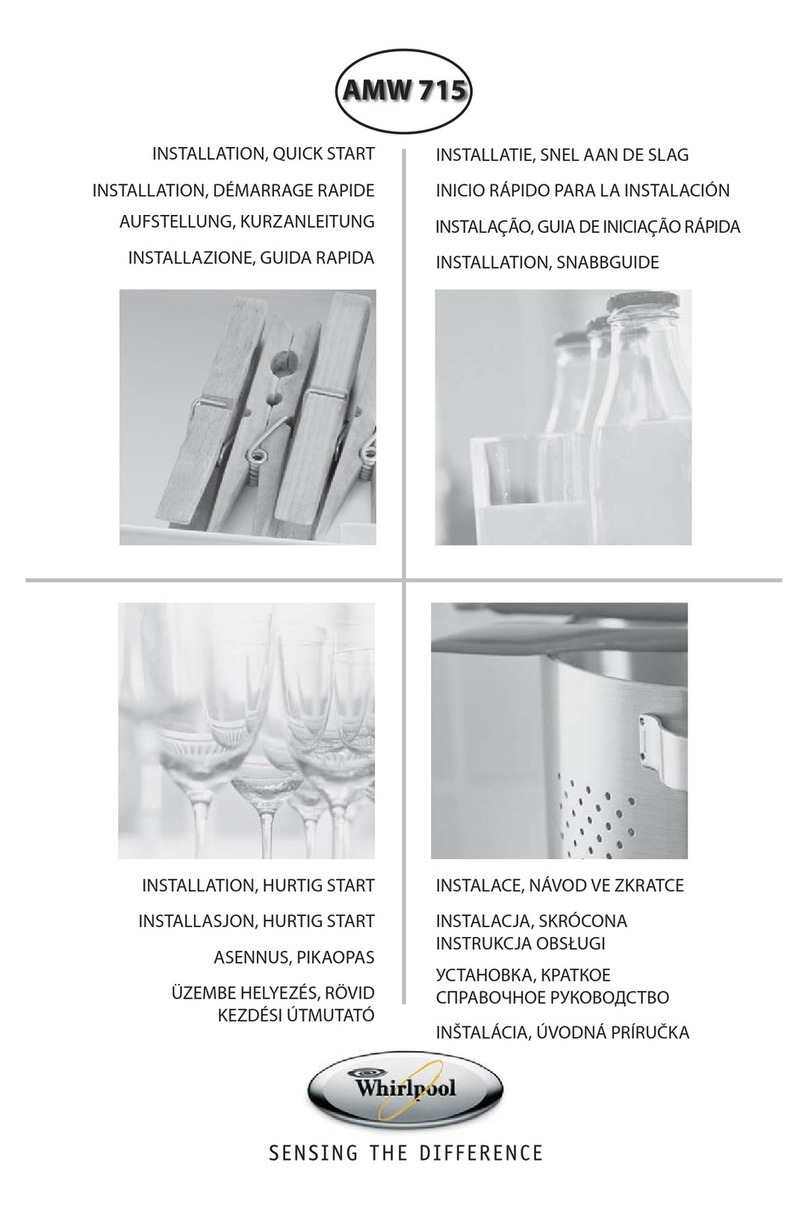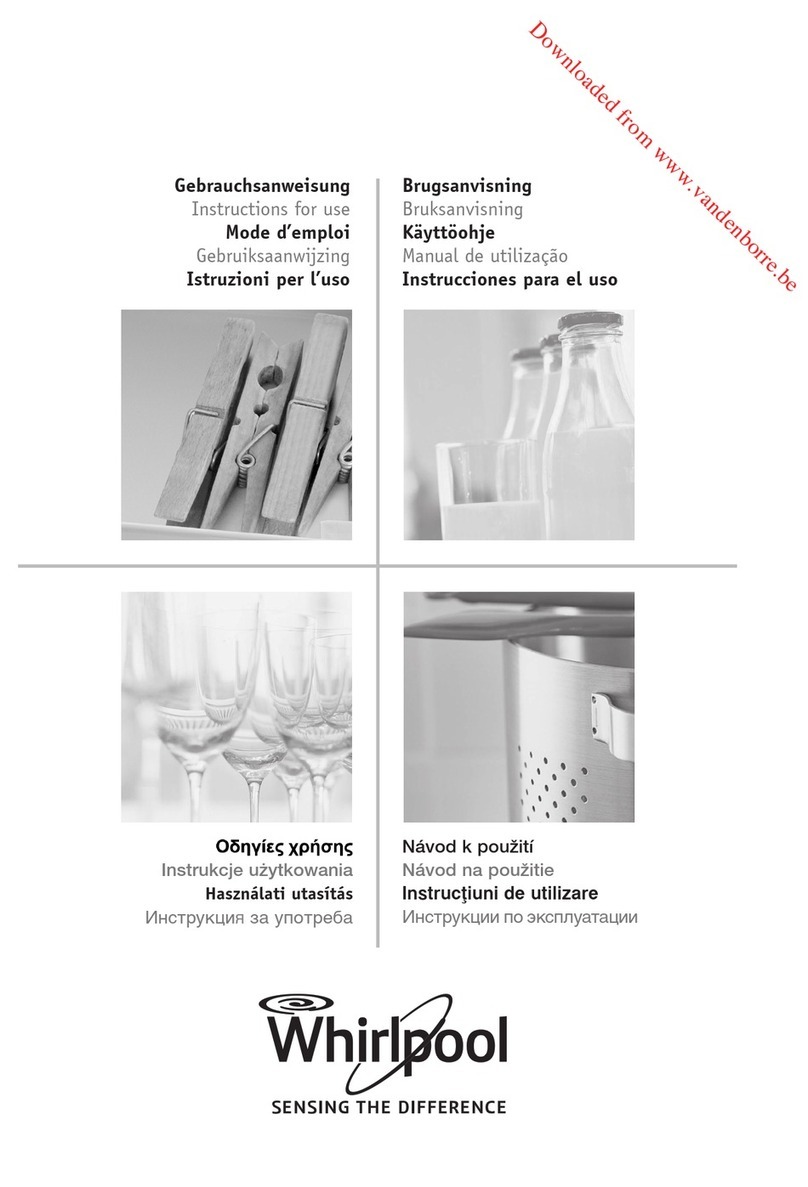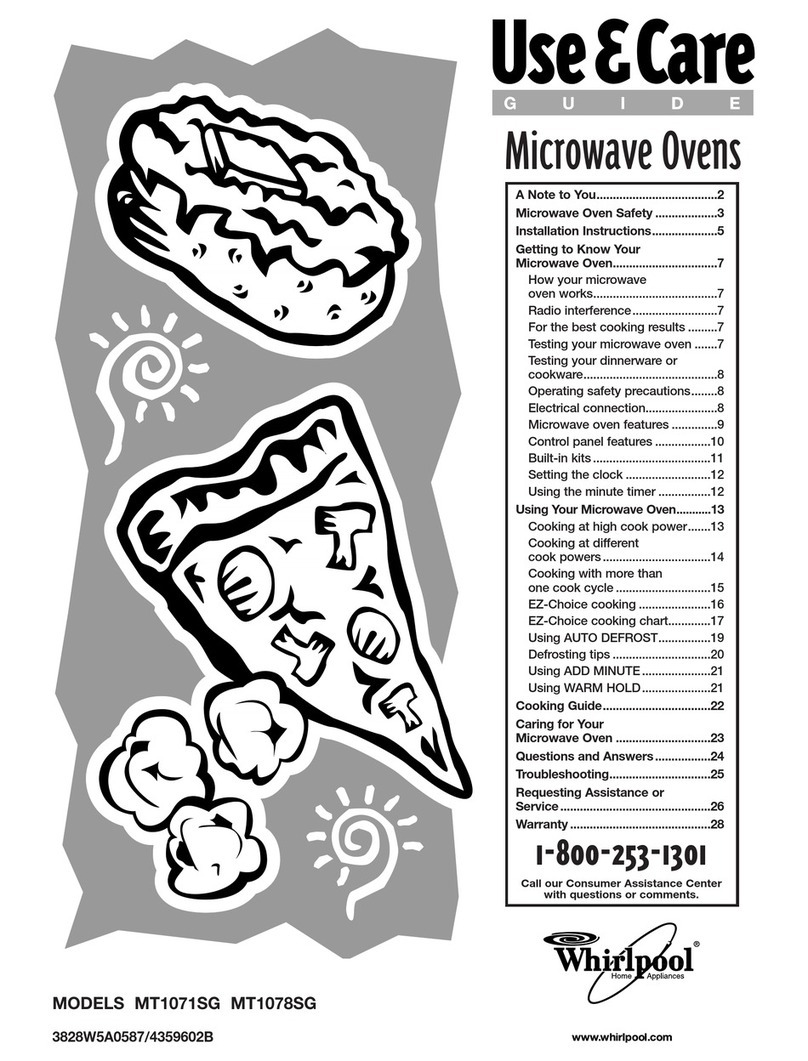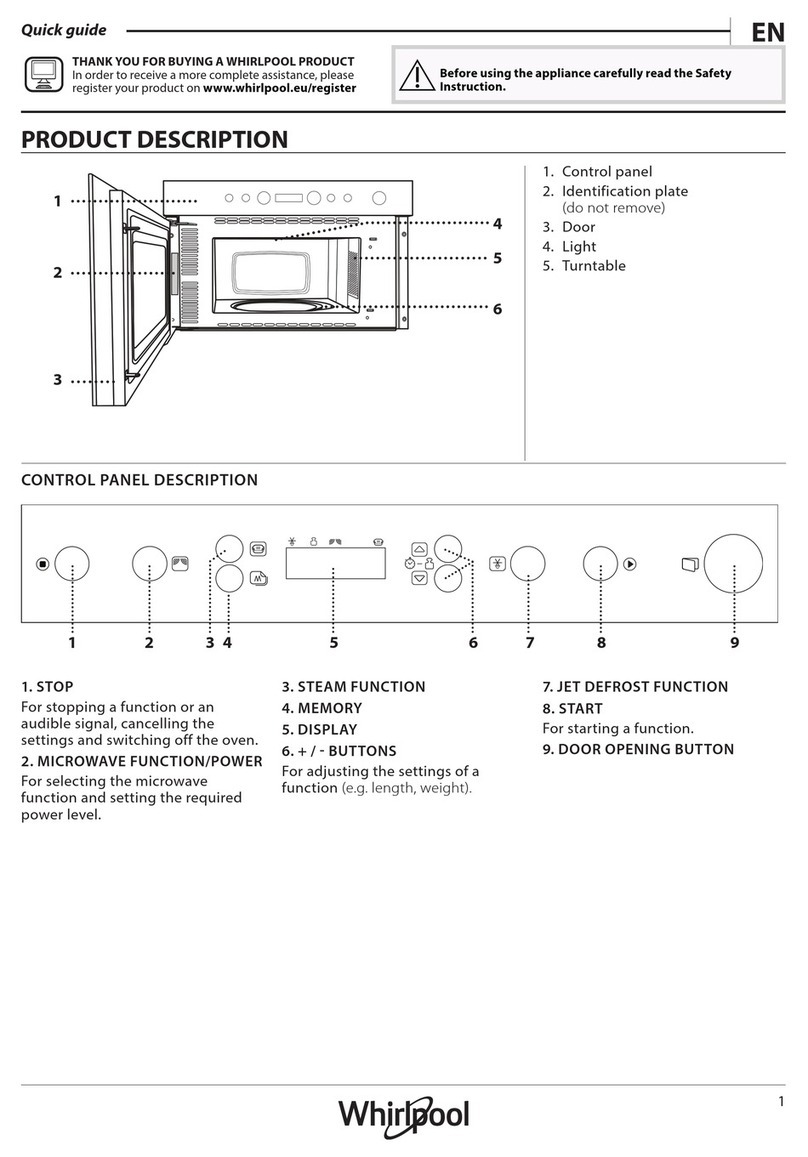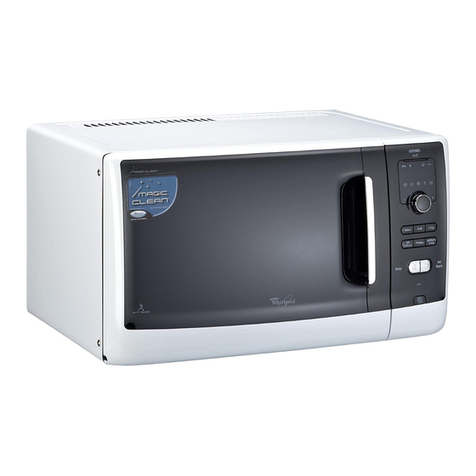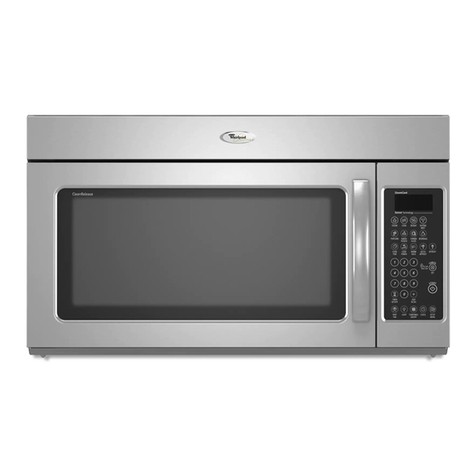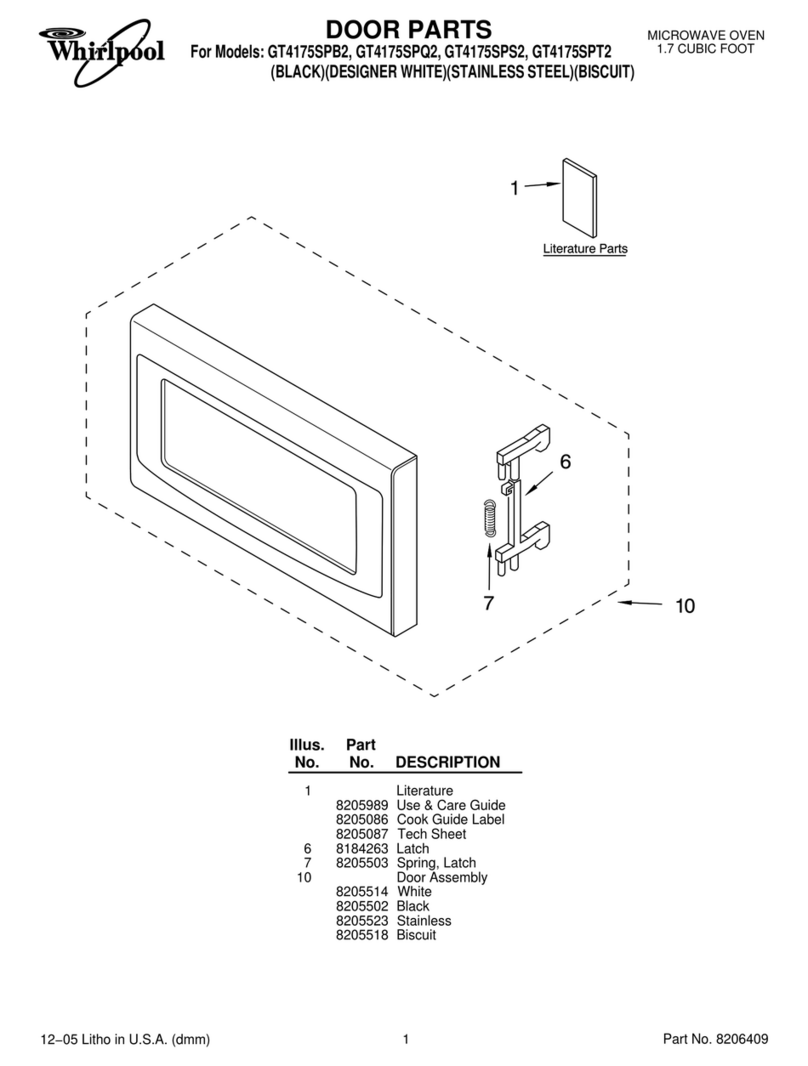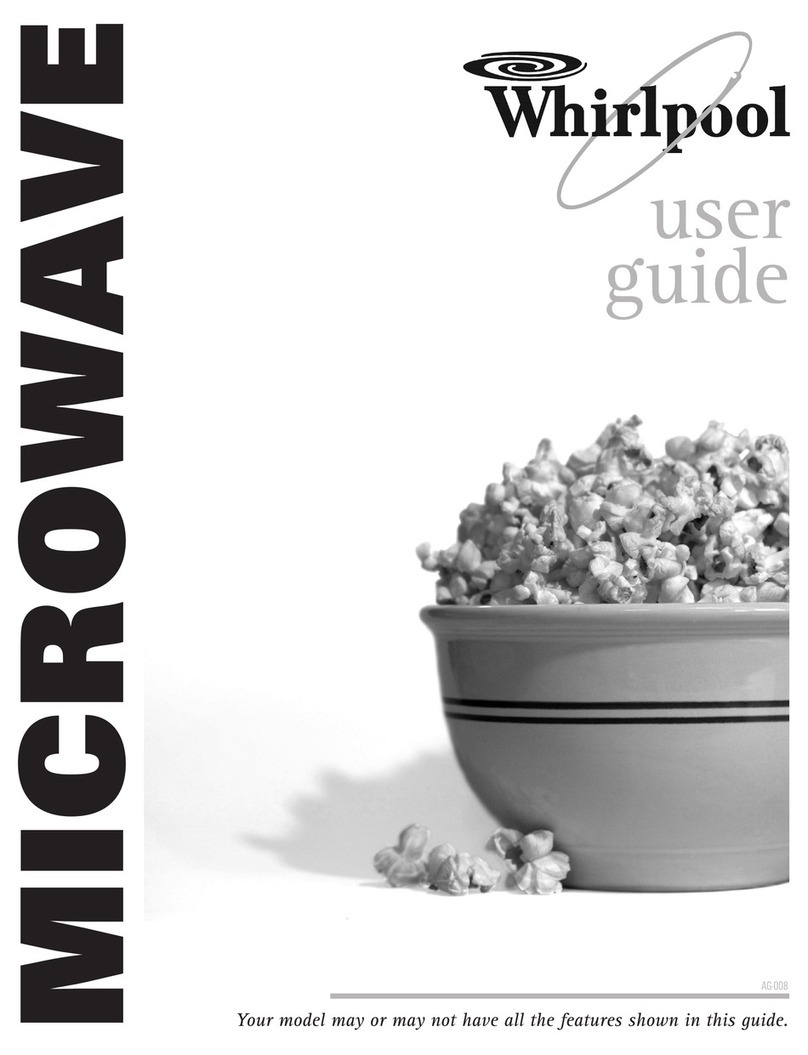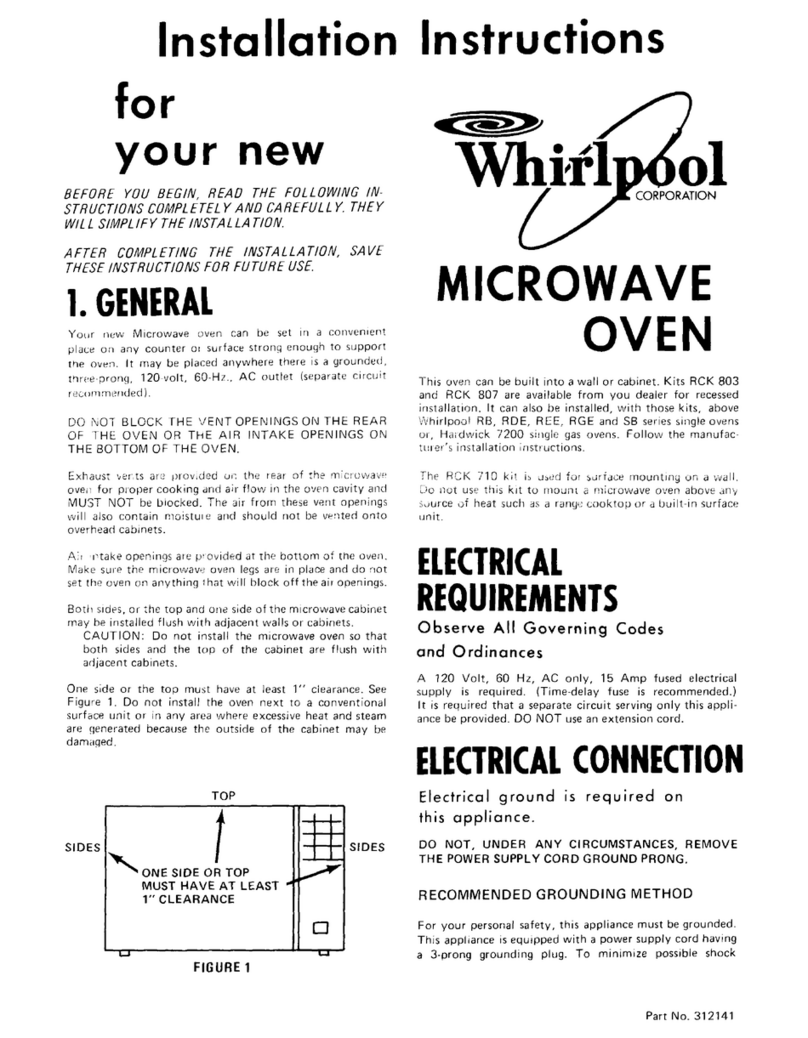
10
Shielding
Use small, flat pieces of aluminum foil to shield the thin pieces of
irregularly shaped foods, bones, and foods such as chicken wings,
leg tips, and sh tails. See the “Aluminum Foil and Metal” section
rst.
Standing Time
Food will continue to cook by the natural conduction of heat, even
after the microwave cooking cycle ends. The length of standing
time depends on the volume and density of the food.
Cookware and Dinnerware
Cookware and dinnerware must t on the turntable. Always
use oven mitts or pot holders when handling because any dish
may become hot from heat transferred from the food. Do not
use cookware and dinnerware with gold or silver trim. Use the
following chart as a guide, then test before using.
Material Recommendations
Aluminum Foil, Metal See the “Aluminum Foil and
Metal” section.
Browning Dish Bottom must be at
least 3/16"(5 mm)
above the turntable.
Follow manufacturer’s
recommendations.
Ceramic Glass, Glass Acceptable for use.
China, Earthenware Follow manufacturer’s
recommendations.
Melamine Follow manufacturer’s
recommendations.
Paper: Towels, Dinnerware,
Napkins Use non-recycled and those
approved by the manufacturer
for microwave oven use.
Plastic: Wraps, Bags, Covers,
Dinnerware, Containers Use those approved by the
manufacturer for microwave
oven use.
Pottery and Clay Follow manufacturer’s
recommendations.
Silicone Bakeware Follow manufacturer’s
recommendations.
Straw, Wicker, Wooden
Containers
Do not use in microwave
oven.
Styrofoam®† Do not use in microwave
oven.
Wax Paper Acceptable for use.
To Test Cookware or Dinnerware for Microwave Use:
1. Place cookware or dinnerware in microwave oven with 1 cup
(250 mL) of water beside it.
2. Cook at 100% cooking power for 1 minute.
Do not use cookware or dinnerware if it becomes hot and the
water stays cool.
Aluminum Foil and Metal
Always use oven mitts or pot holders when removing dishes from
the microwave oven.
Aluminum foil and some metal can be used in the microwave
oven. If not used properly, arcing (a blue flash of light) can occur
and cause damage to the microwave oven.
†Styrofoam®is a registered trademark of The Dow Chemical Company.
OK for Use
Racks and bakeware supplied with the microwave oven (on
some models), aluminum foil for shielding, and approved meat
thermometers may be used with the following guidelines:
■To avoid damage to the microwave oven, do not allow
aluminum foil or metal to touch the inside cavity walls, ceiling,
or floor.
■Always use the turntable.
■To avoid damage to the microwave oven, do not allow contact
with another metal object during microwave cooking.
Do Not Use
Metal cookware and bakeware, gold, silver, pewter, non-approved
meat thermometers, skewers, twist ties, foil liners, such as
sandwich wrappers, staples, and objects with gold or silver trim or
a metallic glaze, should not be used in the microwave oven.
Metal bakeware may be used only during convection (bake)
cycles. Use ovenproof, microwave-safe cookware for all other
convection and combination cooking.
Microwave Cooking Power
Many recipes for microwave cooking specify which cooking power
to use by percent, name, or number. For example,
70%=Medium-High=7.
Use the following chart as a general guide for the suggested
cooking power of specic foods.
MICROWAVE COOKING POWER CHART
Percent/
Name
Number Use
100%, High
(default setting) 10 Quick-heating convenience
foods and foods with high
water content, such as soups,
beverages, and most vegetables.
90% 9Cooking small, tender pieces
of meat, ground meat, poultry
pieces, and sh llets.
Heating cream soups.
80% 8Heating rice, pasta, or
casseroles. Cooking and heating
foods that need a cook power
lower than high, for example,
whole sh and meat loaf.
70%, Medum-
High 7Reheating a single serving of
food.
60% 6Cooking sensitive foods such as
cheese and egg dishes, pudding,
and custards.
Cooking non-stirrable casseroles,
such as lasagna.
50%, Medium 5Cooking ham, whole poultry, and
pot roasts.
Simmering stews.
40% 4Melting chocolate.
Heating bread, rolls, and pastries.
30%, Medium-
Low, Defrost 3Defrosting bread, sh, meats,
poultry, and precooked foods.
20% 2Softening butter, cheese, and ice
cream.
10%, Low 1Taking chill out of fruit.
